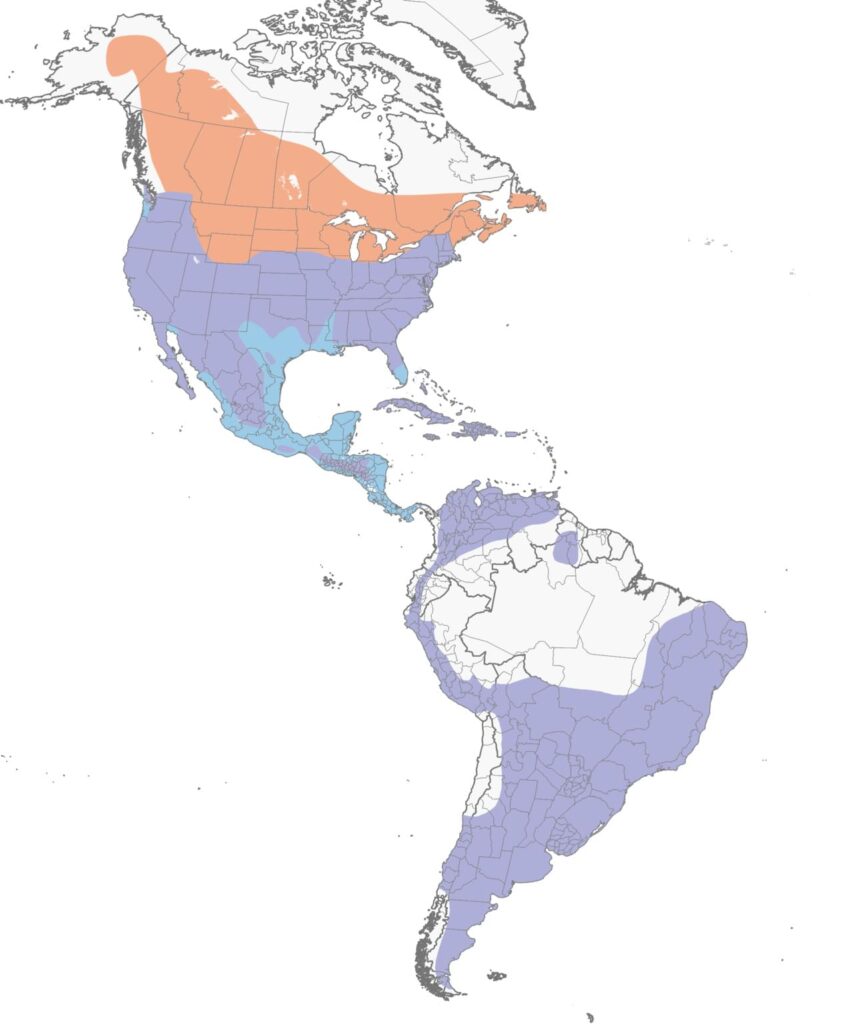Main Office: 541-230-1220 | Wildlife Hotline: 541-745-5324
Wildlife Hospital very busy: please call hotline before bringing in an animal
American Kestrel
Scientific Name: Falco sparverius (comes from Latin meaning Falcon of Sparrows, referring to the kestrel’s ability to take down small birds)
Description: The smallest falcon in North America, American Kestrel’s have a wingspan of 20 to 24 inches and range from 80 to 165 grams in weight. Males are usually smaller than females. This species is one of the few American raptors that demonstrate feather sexual dimorphism (meaning males and females have different color patterns). Males have slate-grey feathers on their wings and small black spots on their chest/belly feathers. Females will have wings with reddish-brown and black streaks and brown streaks on their chest and belly.
Behavior: American Kestrel’s will often be seen on very high perches, boasting their territorial call “Klee! Klee! Klee!”. They have excellent eyesight and can even see ultraviolet light. Once they have focused on a prey animal, they will leap up into the air and flutter their wings quickly to hover for a moment before pulling in their wings to dive down to catch it. When diving, these little falcons can reach up to 60mph! Once they have caught their prey, they will return to a higher, but more sheltered position to eat. American Kestrel’s are normally solitary birds but will pair up during breeding season. Males will advertise themselves by flying up high and diving down over and over, screaming “Klee!” each time they reach the top of their flight pattern. Males will also offer their mates gifts of food (females will do so less often). American Kestrels will find unused cavities to nest inside (oftentimes holes in trees left behind from other animals). Usually the male will find several possible nest sites and the female will choose the one she prefers. Females lay 4-5 eggs per clutch and both sexes will help raise the young over the next couple months. If the eggs are laid early enough in the season, the pair may be able to raise two clutches in a single breeding season.
Diet: American Kestrels are obligate carnivores, meaning they can only eat other animals and are unable to use fruits and vegetables for sustenance. They will hunt small songbirds along with grasshoppers, beetles, spiders, butterflies, moths, mice, shrews and even bats to name a few. American Kestrels also sometimes eat small snakes, lizards, and frogs. Larger kestrels have sometimes been seen hunting bigger prey such as red squirrels and Northern Flickers.
Range:

Conservation: The International Union for Conservation of Nature (IUCN) lists the American Kestrel as a species of Least Concern. However, there has been a slight decline in populations each year, culminating in a decline of 53% between 1966 and 2019. If this trend continues, American Kestrel populations could decline another 50% by 2075. Exposure to pesticides and other pollutants can reduce the number of eggs laid in a clutch as well as the likelihood that the eggs will hatch. Pesticides also kill off a major food source for American Kestrels. A loss of nesting sites and prey animals due to habitat defragmentation is also contributing to this gradual decline.
How you can help: Supporting companies that do not use chemical pesticides and other chemicals to kill insects. Creating a garden of native plants will help native animals thrive, including the insects and small vertebrates that kestrels eat. Legislation that protects wild land helps to combat habitat loss. People can even build & install nesting boxes in their yards to help provide homes for these tiny falcons.
